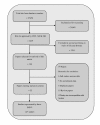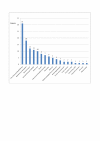Recruiting participants to walking intervention studies: a systematic review
- PMID: 22171531
- PMCID: PMC3261095
- DOI: 10.1186/1479-5868-8-137
Recruiting participants to walking intervention studies: a systematic review
Abstract
Purpose: Most researchers who are conducting physical activity trials face difficulties in recruiting participants who are representative of the population or from specific population groups. Participants who are often the hardest to recruit are often those who stand to benefit most (the least active, from ethnic and other minority groups, from neighbourhoods with high levels of deprivation, or have poor health). The aim of our study was to conduct a systematic review of published literature of walking interventions, in order to identify the impact, characteristics, and differential effects of recruitment strategies among particular population groups.
Methods: We conducted standard searches for studies from four sources, (i) electronic literature databases and websites, (ii) grey literature from internet sources, (iii) contact with experts to identify additional "grey" and other literature, and (iv) snowballing from reference lists of retrieved articles. Included studies were randomised controlled trials, controlled before-and-after experimental or observational qualitative studies, examining the effects of an intervention to encourage people to walk independently or in a group setting, and detailing methods of recruitment.
Results: Forty seven studies met the inclusion criteria. The overall quality of the descriptions of recruitment in the studies was poor with little detail reported on who undertook recruitment, or how long was spent planning/preparing and implementing the recruitment phase. Recruitment was conducted at locations that either matched where the intervention was delivered, or where the potential participants were asked to attend for the screening and signing up process. We identified a lack of conceptual clarity about the recruitment process and no standard metric to evaluate the effectiveness of recruitment.
Conclusion: Recruitment concepts, methods, and reporting in walking intervention trials are poorly developed, adding to other limitations in the literature, such as limited generalisability. The lack of understanding of optimal and equitable recruitment strategies evident from this review limits the impact of interventions to promote walking to particular social groups. To improve the delivery of walking interventions to groups which can benefit most, specific attention to developing and evaluating targeted recruitment approaches is recommended.
Figures
References
-
- Global Advocacy Council for Physical Activity ISfPAaH. The Toronto Charter for Physical Activity: A Global Call for Action. J Phys Act Health. 2010;7(Suppl 3):S370–385. - PubMed
-
- Committee PAGA. Physical Activity Guidelines Advisory Committee Report, 2008. Washington, DC: US Department of Health and Human Services; 2008.
Publication types
MeSH terms
Grants and funding
LinkOut - more resources
Full Text Sources
Miscellaneous




